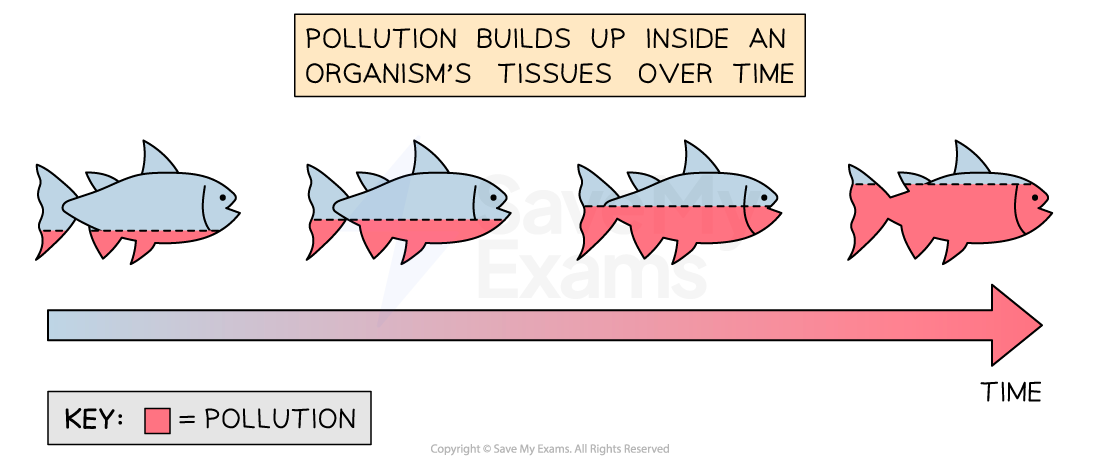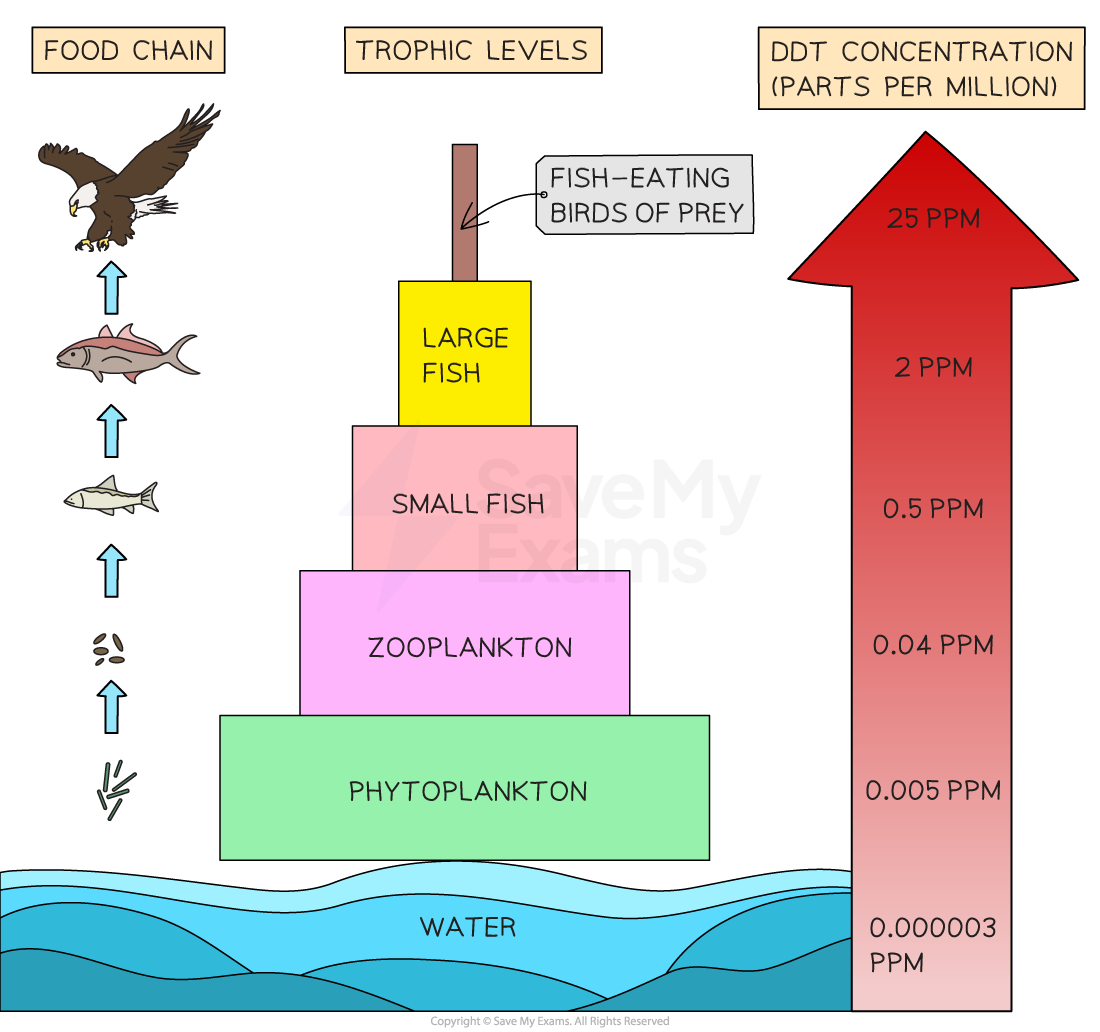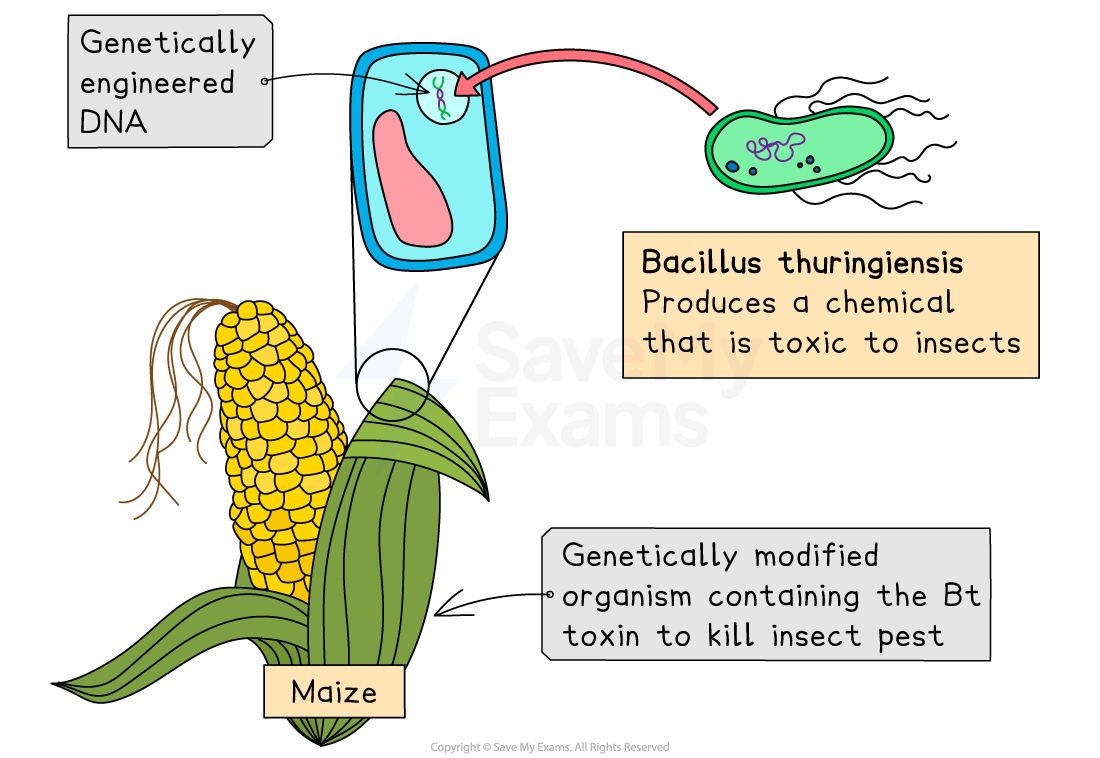Pesticide accumulation (SQA National 5 Biology): Revision Note
Exam code: X807 75
Accumulation of toxins
Pesticides contain toxins designed to kill target pests, but the same chemicals can also harm non-target organisms, such as pollinators, predators and aquatic life
Accumulation within organisms
When organisms consume plant material that has been sprayed with pesticides, toxins can build up inside the tissues over time
This is known as bioaccumulation
While the toxins may not be harmful to non-target organisms in small doses, they can become toxic at higher concentrations

Accumulation through food chains
Toxins can also accumulate as they pass between the levels in a food chain
This is known as biomagnification
As toxins are passed up the food chain from one level to the next, they can become more concentrated due to the decrease in total biomass of organisms at higher trophic levels
I.e. the smaller organisms at the bottom of the food chain will each consume a small volume of toxin, and then the organisms at the top of the food chain will consume many smaller organisms and receive a much larger dose
Toxicity increases at higher levels of the food chain and can reach lethal levels
Example: DDT
DDT was a widely used insecticide in the mid-20th century that was found to have harmful effects on top predators, such as birds of prey
When DDT was sprayed on crops, it would leach into waterways and eventually enter freshwater and marine ecosystems
DDT would then enter food chains via plankton and accumulate in the bodies of fish
These fish would then be eaten by birds, which would accumulate higher concentrations of DDT

Examiner Tips and Tricks
Note that the specification does not use the term biomagnification, so you do not need to learn this word, but you are expected to know the term bioaccumulation and the distinction between:
toxins accumulating in the bodies of organisms over time - this is bioaccumulation
toxins accumulating as they are passed along food chains - this is biomagnification
Alternatives to pesticides
Biological control and GM crops can reduce the spraying of pesticides by preventing or suppressing pests in other ways
Biological control
Biological control uses living organisms, e.g. predators, parasitoids, or disease-causing microbes, to reduce pest populations, instead of chemical sprays
Examples include:
ladybirds and their larvae predate on herbivorous aphids
parasitic wasps lay eggs inside caterpillar eggs, killing the pest before it hatches
predatory mites hunt red spider mites on crops like tomatoes and cucumbers
GM crops and pest control
GM crops are crop plants in which the DNA has been deliberately altered to give useful traits, such as resistance to insects or disease
They can be used to reduce the need for pesticides in several ways, e.g.:
Bt maize / cotton produce a highly specific Bt protein that is toxic to certain insect larvae
A GM soybean plant produces an enzyme inhibitor that blocks digestive enzymes in insect guts
Crops may be engineered to release insect sex pheromones, which confuse pests and reduce mating, lowering pest numbers


Unlock more, it's free!
Did this page help you?